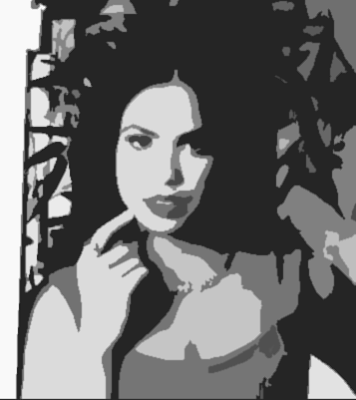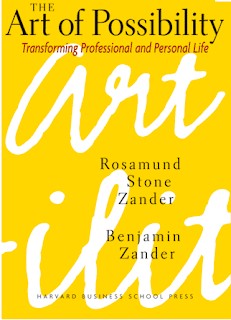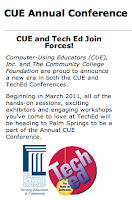Welcome....
Since as far back as I can remember, and since I am turning 30 this month that seems like a lot longer than it probably is, I have wanted to teach. The first of 20 or so in my generation, I was somewhat predestined to be a leader. When I realized teaching someone something new not only empowered the other person, but also deeply empowered me, I was hooked. In high school I was a member of a program that partnered special education students with peers to promote success for both and working my summers at sleep away camp for children with disabilities. I took some time off to find myself and begin a family but could not stay away. I am currently working in a school where I plan on making a huge difference.
My struggles are not always unique, they are sometimes emotional, and they are always worth sharing...
Sunday, March 27, 2011
Week 4- Leadership Project
Week 4- Comments to My Classmates #2
 |
| Image retrieved and modified from FB profile pics. |
Saturday, March 26, 2011
Week 4- Comments to My Classmates #1
 |
| Retrieved and modified from FSO profile pics. |
I enjoyed Zander’s remarks about lighting a fire in others. I feel like I was born with the ability to do this and see it as a big responsibility to my students as well as my family and friends. The way he described enrollment as the ability to give yourself as a possibility to others and to be ready to catch their spark really hit home with me. He has so many inspiring lines in this book that I want to remember. I felt a strong reaction to his discussion of taking “no” less personally and myself less seriously and in doing that being able to see the opportunity for enrollment.
Week 4- Reading- The Art of Possibility (cont...)
Sunday, March 20, 2011
Week 3- Leadership Project
 |
| Retrieved from Flickr Creative commons Circusfrom craiglea123 |
 |
| Retrieved from Flickr Creative commons Untitled from tati w. |
Week 3- Free Choice- Leadership Project
Week 3- Comments to My Classmates- #2
 |
| Retrieved and Modified from FB pics. |
Week 3- Comments to My Classmates- #1
 |
| Retrieved and modified from FB |
Week 3- Reading- The Art of Possibility (cont...)
Sunday, March 13, 2011
Week 2- Free Choice- Leadership Project Continued
 |
| Retrieved from Flickr Creative Commons me? stressed out?from joshfassbind.com |
 |
| retrieved from flickr creative commons from zeng.tw |
Week 2- Reading- The Art of Possibility
Saturday, March 12, 2011
Week 2 - Comments to My Classmates #2
 |
| Image retrieved and modified from FB profile pics. |
In the second chapter, Universe of Possibility, I enjoyed reading about the 9 dot problem. I remember doing that in elementary school, and it stuck with me through all these years, so it was great reading about how the book viewed that and how we should look to move beyond the imaginary borders in our everyday lives. Again, this chapter focused on how our lives are shaped by assumptions, which was a bit of an eye opener, because I never thought about things like that.
The third chapter, Giving an A, is another remarkable way at looking at things. I liked the quote, "The A is not an expectation to live up to, but a possibility to live into" (pg 26). I also thought it was great how the book referenced Da Vinci's view on a block of marble and how inside of it is an amazing sculpture. Basically saying that we all are amazing inside, just waiting to be built up! The assignment in which one of the authors had their students write letters from their future selves in order to receive an A in class had me wondering how well something like that would work in my class. While I think it's quite a novel idea... I'm not yet sold on doing it for my students... yet.
The final chapter, Being a Contribution, focuses on how we should all strive to make a difference in the world, even if we don't know how or why.
Overall, I enjoyed reading the first four chapters of this book. It reminds me of one of my favorite books of all time, The Alchemist by Paul Coelho. One quote from The Alchemist is, "...when we strive to become better than we are, everything around us becomes better too" (pg 150).
My Comments to Mike-
Mike-
You did an great job of summarizing the direction of each chapter. I too found the writing inspirational. It is interesting that you related or found connection to prior reading. As I read these chapters I could not stop thinking about how this book was giving me a similar feeling as a book that I read in HS. It was more of a fictional piece but had similar underlying message, the book was called the Celestine Prophecy by James Redfield in which the lead character is on a quest to find "insights" and develops an understanding of how we interact with each other and how we ourselves become our optimal self.
I think that we as teachers need to continually be willing to look at the world and the experiences around us from different points of view or else we will cease to grow.
I shared your "eye opening" in chapter two as I thought about how limiting we can be to ourselves. When we live by our assumptions, you not only fall into that saying... "when you assume you make an *** out of you & me" but you really are preventing yourself from a larger or deeper or just a different experience than the one you gain otherwise. Since life is defined by our experiences we should make all attempts to make those experience meaningful and full of growth.
I thought about the marble metaphor as well, and the amazing thing about sculpture is that it can always be adjusted. But the most effective way to create a piece of art through such methods is by creating a clear image in your mind of what you would like to make, but to always be willing to compromise and work with the feel of the medium, to allow the marble to have a say in what it becomes. When we consider what and how we are "grading" our students we really should be looking at it with both our vision and theirs in mind as well as with the idea that certain materials get sculpted or molded using different methods. To stick with the metaphor, if you try to sculpt an iron statue using the same methods as marble you will be greatly disappointed.
Mike- Thanks for your insight.
Week 2- Comments to My Classmates #1
 |
| Image retrieved and modified from FB profile pics. |
Sunday, March 6, 2011
Week 1- Free Choice- Leadership Project
 |
| Retrieved and Adapted from Flickr Creative Commons Speaking To an Empty Room by By herzogbr |
 |
| Retrieved from Flickr creative Commons Leap of Faith And as if that did not pile up enough, my tertiary concern is that as I approach the end of this wonderful journey at FSO in EMDT, I am excited by the idea that there are countless opportunities out there to share and expand upon the experiences I will walk away with. Although there is a level of excitement, it feels similar to standing at the edge of a cliff looking down at the lake below. You know so many have taken the leap before you and you know that once you take the first step, the rest will be indescribably exhilarating. With all that said and done, it does not take away from that gut feeling of stifling fear, which keeps you frozen in place until either you find the courage or your friend jovially gives you the necessary shove. So I suppose with the aforementioned analogy, I am on my climb up the cliff abutting the beautiful lake, and at this phase I should be mentally mapping out my moves and psyching myself up to take the plunge! |
Saturday, March 5, 2011
Week 1- Reading- Copyright and Creative Commons
 |
| Retrieved from Flickr Creative Commons Franz Patzig-from A. Diez Herrero |
 |
| Retrieved from Fickr Creative Commons Creative Commonsfrom karindalziel When I consider these issues of copyright, creative commons, and how they effect my instruction in the classroom, it is so scary and complicated. I want to provide my students with as much knowledge and as many opportunities to truly comprehend the world around them. On the other hand, I know for a fact that I take many chances and many liberties within the four walls of my classroom to do that. It is scary to think that much of what I do is not necessarily legal but in the long run those that would be on the other end of any lawsuit are the same that I would be provide a spotlight for or enlightening my students about. Creative commons is interesting to me in that the artist in fact have the control, not some legislator or some lawyer. The artist is given the right to pick and choose what uses their work can have by others. I can’t help but wonder and worry about where the future of copyright will lead this next generation of artist coming up. I hope for this sake we do find a happy and manageable medium ground in which we continue to foster creativity. |
 |
| Retrieved from Flickr Creative Commons CC swag Ifrom BotheredByBees |

















